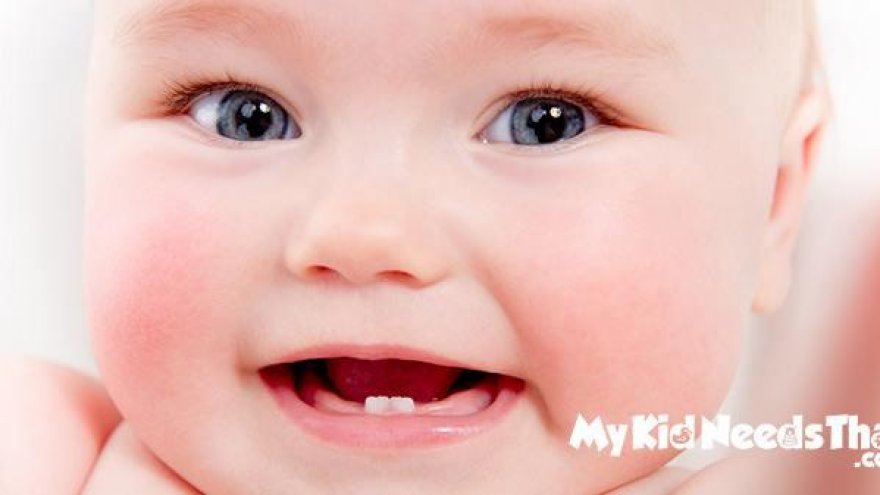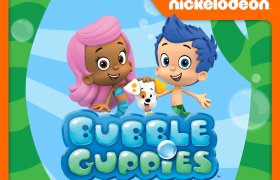When Do Babies Start Teething?

One of the most anticipated physiologic events for any growing baby is the eruption of his or her first tooth. It often signals the continuing development of babies as they try to achieve the physical stature of a grownup. But, there is a nagging question as to when do babies start teething.
When Do Babies Start Teething?
Like all things in life, no two individuals are exactly alike; and that includes babies. One infant may have his or her first tooth as early as 4 months while another may have it at around 8 months. There clearly is no foolproof way to ascertain that the first dentition should erupt a certain number of days from birth. It simply doesn’t work that way. But there are several ways in which baby teething is heralded in the body. These signals typically occur 2 to 3 months before the actual eruption of the first baby tooth. If you can recognize these signs, then all you need to do is to wait about 2 to 3 months and the first pearly white will soon be very evident. As such, you can expect this to occur around 4 to 6 months although it is not really unusual to have babies teething as early as 3 months or even as late as their first birthday. The point is every child is unique. Don’t expect your young angel to present his or her first tooth by the 4th month simply because your other child had his or her at roughly the same time.
The development of baby teeth actually starts while the baby is still a fetus inside mommy’s womb. The basic building blocks needed to form baby dentition are laid out as early as 4 and 6 weeks of pregnancy. By the time mommy reaches 3 months into her pregnancy, mineralization already starts to occur. This is characterized by the deposition of hard tissue around the basic structure of the teeth. We can thus, look at teething as just a continuation of this mineralization process. Over time, since more and more substances are deposited, the teeth are slowly projected outwards and through the gums until we see them as teeth.
We have 32 teeth. Babies have 20. Let us first have a rundown of the different names of the teeth.
- 4 central incisors – front teeth
- 4 lateral incisors – teeth to the side of the front teeth
- 4 canines – fang-like teeth next to the lateral incisors
- 8 molars – cube-like teeth next to the canines
The dental growth pattern of babies typically proceeds in the following manner:
- First to erupt – lower central incisors, typically around 6 to 10 months
- Second to erupt – upper central incisors, around 8 to 12 months
- Third to erupt – upper lateral incisors, around 9 to 13 months
- Fourth to erupt – lower lateral incisors, around 10 to 16 months
- Fifth to erupt – upper 1stmolars by 13 to 19 months
- Sixth to erupt – lower 1stmolars by 14 to 18 months
- Seventh to erupt – upper canines, around 16 to 22 months
- Eighth to erupt – lower canines, around 17 to 23 months
- Ninth to erupt – lower 2ndmolars by 23 to 31 months
- Last to erupt – upper 2ndmolars by 25 to 33 months
What Signs Should You Look Out For to Know Your Baby is Starting to Teeth?
As you can see from the above discussion, tooth eruption is highly variable. And there simply is no way of telling exactly when the very first tooth of our babies will occur. However, if you also look closely, there is a pattern which typically starts in the center moving outwards. This should give you an idea to check whether your child’s dentition is progressing normally or not. On a more important note, it is critically important to be knowledgeable of the different signs that foretell the coming of a tooth. Here are the signs that you have to look out for so you’ll know a baby tooth is in the offing.
- Drooling – One of the earliest signs of teething is drooling. This typically occurs as the growing tooth stimulates the increased production of secretions in an attempt to ease the progress of the tooth. Some babies drool as early as 10 weeks old while others won’t drool until they are about 3 or 4 months old.
- Rashes – With the constant drooling, it is inadvertent that the moisture can irritate the skin causing redness, chafing, and chapping especially around the area of the mouth as well as the chin. Oral secretions are slightly acidic and that when they do get in contact with the skin, it can turn quite ugly, presenting itself as rashes.
- Biting – In an effort to produce counterpressure on the erupting tooth, babies love to bite. They don’t do it out of sheer joy or pure exhilaration but rather to help slow down the advance of the protruding tooth. By biting, the tooth is slowed down in its advance, relieving pressure and discomfort. Imagine having a headache. It hurts. But by applying counterpressure through massage, you are actually relieving the pain. The same principle works in babies biting or chewing as a means to relieve the pain or discomfort.
- Stimulation of the gag or cough reflex – Because of the constant drooling, your infant will inadvertently accumulate quite a substantial volume of saliva or drool inside his or her oral cavity. This can stimulate the coughing reflex or even the gag or choking reflex. As long as there are no signs of a respiratory infection – fast breathing, funny noises upon inhalation or exhalation, or even secretions coming out from the nose – then, it’s not really a cause for concern.
- Crying – Babies cry for a lot of reasons. They cry when they’re hungry, has poop in their diapers, wants to be carried, or simply wants attention. Babies typically cry if they are uncomfortable or are in pain. If your child is crying for no apparent reason and despite feeding him or her or carrying him or her, then it is most likely that he or she is in pain. Unfortunately, this does not automatically point to teething pain so the sign should be seen together with other signs.
- Irritability or fussiness – If babies are not crying, they will surely be irritable or very restless. Just like us adults, irritability is often a sign of discomfort. The drooling and the pressure of the tooth forcing its way through the young gums can really be a great source of discomfort for the young one.
- Refuses to feed – If we have a toothache, we really cannot enjoy our meals. While teething babies don’t have teeth yet to begin with, the pressure and tenderness on the gums can really make them not want to eat.
- Pulling on the ears or rubbing the cheeks – The ears, cheeks, and the gums share the same neural pathway such that when babies are teething, these sensations are also carried over to the cheeks and the ears. This is especially true if your baby is already in the process of erupting his or her molars. Now, there are many reasons why there may be discomfort in the cheeks or the ears so it’s best to consult with your pediatrician to rule out any possible ear infection.
- Waking at night or sleep difficulties – It is inadvertent that if babies experience pain or discomfort, their sleep will also be affected.
How Can These Symptoms be Managed?
While these signs are all excellent indicators of a much-awaited event in the lives of our young children, they do pose significant levels of distress to the young ones. As such, it is imperative that we help them manage their symptoms.
- Give them something to chew – Teething necklaces and chewable toys can work to help relieve the pressure and discomfort off the erupting tooth. For added effectiveness, the teething implements can be cooled, but not frozen, to allow for the cold to numb the pain, providing additional comfort.
- Apply counterpressure – We already talked about counterpressure. This is what teething toys actually provide. However, if you don’t have toys for this purpose, you can use your finger or even a wet toothbrush. Just make sure your finger is clean before pressing it against your child’s gums.
- Numb the pain – Cold applications can do wonders by numbing the pain. You can give refrigerated foods like yogurt and applesauce. Ice-cold water can also do wonders. You can even give chilled bananas or plums, but make sure to do this only with your supervision as the large chunks can be a choking hazard. Also, don’t use frozen items as this can be particularly damaging to the young gums as well. Avoid numbing agents as well.
- Give analgesics – Ask your pediatrician to prescribe an analgesic for your baby. Usually acetaminophen is prescribed.
- Provide extra tenderness in your care – Sometimes, babies only need some extra hugs, kisses, and snuggles as well as tons of patience for them to get through their teething issues.
Teething is one of those developmental milestones of young children that are most awaited by parents. By knowing the different signs leading to when your baby will be teething, you can now prepare yourself and your baby for the milestone of a lifetime. For further information on some great products you may like, check out our post on the top teething toys for babies here.







